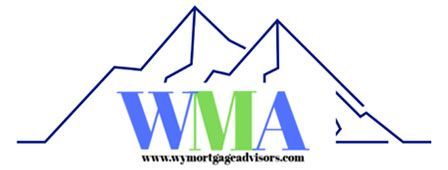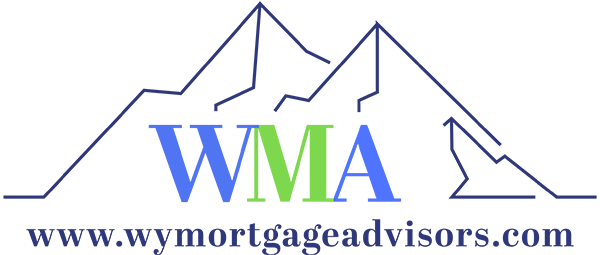FAQs
WYO Mortgage Advisors
Have a mortgage-related question? We have the answer. Check out these FAQs and give us a call today for more information!
-
What are interest rates doing?
A lot of variables go into this, but we try to price competitively so you don't have to shop around to get the best rates.
-
How do I qualify for a loan?
The idea of meeting with a lender can be intimidating, especially if you’re buying your first home. After all, this is probably the biggest purchase you’ll ever make. But don’t let it stress you out! Mortgage professionals like WYO Mortgage Advisors work to make the process as simple as they can. All you need to do is provide a few basic items (and be upfront about any issues). Items a lender will want to validate include, but aren’t limited to:
- Your employment and income (generally looking back 2 years)
- Your debts (lenders will pull credit)
- Your assets (usually thru 1-2 months of bank statements)
- Your down payment and anticipated purchase price. A good lender will clearly explain your mortgage options and answer all your questions, so you feel confident in your decision. If they don’t, shame on them and head to another lender. A mortgage is a huge financial commitment, so ask any and all questions.
-
What’s the difference between being prequalified and preapproved?
A quick conversation with your lender about your income, assets, and down payment is all it takes to get prequalified. But if you want to get preapproved, your lender will need to verify your financial information and submit your loan for preliminary underwriting.
Preapproval takes a little more time and documentation, but it also carries a lot more weight.
-
How much home can I afford?
Buying “too much house” can quickly turn your home into a liability instead of an asset. That’s why it’s important to know what you can afford before you ever start looking at homes with your realtor. BEST PRACTICE - DON'T MAX OUT YOUR PRICE BASED ON WHAT YOU CAN QUALIFY.
A good conservative approach to what you should budget for your total mortgage payment is 25% or less of your gross pay. Though this will certainly vary, it is a good starting point. For example, if you bring home $6000 a month, your monthly mortgage payment should be no more than $1500. You can go higher, but this keeps you from being “house-poor”. And don’t forget, owning a home requires you to handle the maintenance, not the landlord. A water heater repair or roof repair is costly and will be your responsibility, not the landlord's. Budget accordingly!
-
How much should I save for a down payment?
WYO Mortgage Advisors recommends putting at least 5–10% down on a home, but 20% is even better because you won’t have to pay private mortgage insurance (PMI). PMI is an extra cost added to your monthly payment that doesn’t go toward paying off your mortgage. It only insures the lender against default by the mortgagor. And it doesn’t go away until you reach a 20% equity position in your home (you need to work with your lender to get it removed or it will automatically fall off at 78% of the original value of the home you purchased or refinanced).
Yes, saving a larger down payment is difficult and takes time, but the benefits, such as built-in equity and a lesser payment, are worth it.
-
How do I know which home mortgage option is right for me?
There are literally dozens of mortgage options available. From the standard 30-year fixed rate conventional to the FHA ARM, you really need a mortgage professional to guide you through those waters. Think Risk versus Reward when it comes to mortgage products.
Here are the most common mortgage loan types: Conventional Fixed Rate loans, the standard of the industry
- Conventional Fixed-Rate loans, the standard of the industry
- Adjustable-Rate Mortgage (ARM) can reset the rate (up or down) annually based on what the index (usually a security of some kind) is doing
- Federal Housing Administration (FHA) loans require lesser down payment but generally have more documentation needed for qualification
- Department of Veterans Affairs (VA) loans are reserved for our brave soldiers and veterans and can be done with no down payment
- Other programs, such as non-QM, bond loans, even negative amortization loans can be found with some lenders.
A pro tip here, look at your personal situation when buying a home. What one person does differ from the next just based on their future plans. And again, I like the 25% number for your payment as a percentage of your income.
-
How do I lock my interest rate?
Because mortgage interest rates can change from day to day, locking your rate is an important part of the mortgage process. And believe me, no mortgage officer or company can predict what will happen tomorrow or next week with rates. Locking is up to you. Just be sure you lock in a term (usually 30 days or so) long enough to get you to closing. Expiring locks are generally repriced on the worst case scenario, so if your rate expires and rates have moved up, you get the higher rate. In most cases, you can lock your interest rate as soon as your initial loan is approved. Some lenders will even allow you to lock a contract on a home (lock and shop), though generally there is a small fee for this option.
One last piece with rates. Many lenders will give you a rate and estimate and send you on your way with a comment like “If you find something better, let me know, and I will try to match it”. We do not support this way of doing business. Your lender should give you their best rate up front, not after you have spent time shopping around on them to prove they are out of the market in price.
-
What are mortgage points?
The mortgage industry, for years, has pushed paying points and origination (basically they are one and the same) fees on clients. It is basically pre-paying interest to lower the rate upfront. A point equals one percent of the value of your loan. One point on a $500K loan is $5000. This may lower your rate by .25% to .375%, depending on how the mortgage coupons are priced. Paying points generally is a bad idea as it takes a long time to make up the amount you pay upfront. Plus, if you refinance down the road before you have actually recouped the cost, that money is out the window. Unless you can get a great “point” deal, such as .125% to .25% in points gets you .125% in rate, skip the points and focus on putting as much money into your down payment as you can.
Closing costs generally are 3-4% of the loan size (including escrows, more on that below). Adding points just balloons that amount up.
-
What does your mortgage payment include and what is an escrow account?
So, what happens when you send in that mortgage payment every month? It’s nice to think the whole amount just reduces your principal, but your monthly payment actually goes toward a lot more. Here’s what the typical monthly mortgage payment includes:
- Principal and Interest
- Homeowners insurance (escrowed)
- Property taxes (escrowed)
- Private mortgage insurance (PMI), if you put down less than 20% on your home
Your mortgage payment may include additional costs like your homeowner's insurance and property taxes. These are annual expenses that are part of homeownership, and the lender is at risk if you don’t make those payments. If you want to pay more on your mortgage, be sure to specify that you want any extra money to go toward the principal only, not an advance payment that prepays interest.
-
When should I consider refinancing?
This is a great question. The old wisdom was two percent but think about it...if you could lower your payment by a small amount, not increase your term, not bring money to closing, and not increase your loan amount, would a $50-a-month savings be worth it? It may be...and it may only be a .5% drop in rates, or even less based on your loan size. Here are a few things to remember about refinancing:
- How much will my loan amount go up (roll costs into rate, not the loan, it is a higher rate but less costs)
- How will my loan term change (many lenders can customize a term to match what you have left on your current loan)
- How much do I need to bring to closing (if you are bringing no more than your current house payment, your new payment is lower and your term is the same, you are in a good spot)
- If you are taking cash out, PLEASE BE RESPONSIBLE WITH THOSE FUNDS. Don’t put yourself in a more difficult spot. Refinancing is a good tool for your financial toolbox but work with a reputable lender to make sure you are not being fed a line just for someone to earn a commission.
-
What happens after you get preapproved for a home mortgage loan?
Get a good realtor! They know the market and see the new listings well before realtor.com or other sites you can easily access. That’s why it’s important to partner with a buyer’s agent. A good buyer’s agent can guide you through the process of finding a home, negotiating the contract, and closing on your new place.
-
How long does it take to close a home loan?
The average time to close a home mortgage is currently around 43 days (2024 data). Good lenders like PrimeOne Mortgage, LLC strive to get standard conforming loans closed in under 20 days, though more difficult non-QM transactions will take longer.
-
What happens at closing?
When you close, that new house and mortgage are officially yours. In some states, the buyers and sellers all sit around the table and sign a large stack of documents. In other states, they go at separate times. And in today’s electronic world, still others will eClose - sometimes a partial eClose, sometimes everything is signed electronically.
After closing, you will receive first payment information, disclosures around your escrow account, annual documents for taxes, and yes, numerous communications around refinancing your loan. Just reach out to WYO Mortgage Advisors to see if refinancing is worth your time!



Share On: